Harris, R. Luke
Person Preferred Name
R. Luke Harris
Related Works
Content type
Digital Document
Origin Information
Content type
Digital Document
Description / Synopsis
Traditionally, models of conceptual knowledge have relied upon amodal theories that largely overlook how environmental stimuli are converted into amodal representations and how perceptions reactivate these representations and translate them back into subjective modal experiences. Developed more recently, grounded cognition theories propose that physical experiences and conceptual knowledge rely, at least in part, on the same brain regions. Thus, conceptual knowledge is hypothesized to be experienced through the reactivation of the same brain regions that are activated during physical experiences with the environment. Furthermore, if these grounded hypotheses are correct, researchers should be able to observe predictable influences of grounded information on brain activity as well as participant response latencies and accuracy in experimental conditions. To this end, three experiments were conducted testing these hypotheses using semantic categorization tasks while simultaneous recordings were taken using functional near infrared spectroscopy (NIRS) and electroencephalography. It was hypothesized that the influence of automatically reactivated grounded information would be facilitatory (i.e., resulting in faster and more accurate responses for semantically richer words) when it was task congruent, but would be inhibitory (i.e., resulting in slower and less accurate responses for semantically richer words) when it was task incongruent, thus illustrating the automatic simulation of grounded information in the processing and retrieval of conceptual knowledge. NIRS was employed to monitor event-related patterns of prefrontal cortex (PFC) hemodynamics associated with these tasks. It was hypothesized that trials with high levels of task-relevant semantic information would be discernably different than those with low levels or those trials high in task-incongruent information. That is, given the high levels of task-relevant semantic information, these trials should be comparatively easier, thus requiring less activity in the PFC, resulting in less pronounced hemodynamic responses. Electroencephalography was employed to monitor the full-scalp event-related patterns of brain activity associated with the experimental tasks. It was hypothesized that event-related potential deflections and scalp topography would be able to discern qualitatively and quantitatively different patterns of activity as a function of the amount and relevance of grounded information obtained through physical and emotional experiences with the word stimuli’s referents. The behavioural, accuracy, and electroencephalography data generally support these hypotheses. When a stimulus’s grounded information is high and task relevant, participants responded more quickly and accurately, and had discernably different patterns of brain activity than when a stimulus’s grounded information was low and task relevant. When a stimulus’s grounded information was high and task-irrelevant, participants were slower and less accurate, and exhibited patterns of brain activity that reflected both the additional semantic information and the additional processing necessary to reconcile the task incongruence. Unfortunately, data obtained from NIRS failed to illustrate meaningful condition differences. Possible reasons for this are discussed in detail in Chapter 3. Collectively, the data presented in this dissertation serve to advance and extend the claims made by grounded cognition theorists by illustrating the automatic simulation of information obtained through interactions with the environment. Further research is required to extend this work to other brain regions and to develop NIRS methods that can address these research questions.
Origin Information
Content type
Digital Document
Description / Synopsis
The primary objective of this study was to investigate the effects of a 4-week respiratory muscle endurance training (eRMT) program on the physiological and psychological aspects of central fatigue using, respectively, near-infrared spectroscopy (NIRS) and quantification of effort perceptions during maximal exercise. A secondary objective was to assess any impact of eRMT on respiratory health and exercise performance. This study compared pre- and post-eRMT data from the same group of healthy adults. The results indicated that eRMT did not have any effect on respiratory function, exercise time to exhaustion, or physiological responses to exercise but significantly decreased ratings of perceived exertion (RPE) during exercise. An increase in the concentrations of oxygenated hemoglobin [O2Hb], deoxygenated hemoglobin [HHb], and total hemoglobin [tHb] during exercise was observed post-eRMT compared to pre-eRMT, and this increase differed by hemisphere. Based on these preliminary findings, we suggest an eRMTinduced left-to-right hemodynamic shift during exercise, consistent with the change from a novel to a learned task.
Origin Information
Content type
Digital Document
Description / Synopsis
Transcutaneous near infrared spectroscopy (NIRS) of muscle requires coupling between the device and the skin. An unfortunate by-product of this coupling is contact force artefact, where the amount of contact force between the device and the skin affects measurements. Contact force artefact is well known, but largely ignored in most NIRS research. We performed preliminary investigations of contact force artefact to quantify tissue behaviour to inform future NIRS designs. Specifically, we conducted three studies on contact force artefact: (i) an experimental investigation of static load at varied levels of contact force and muscle activation, (ii) an experimental investigation of oscillating load at varied levels of contact force and frequency, and (iii) a Monte Carlo simulation of photon propagation through skin, adipose tissue, and muscle. Our results confirmed that contact force artefact is a confounding factor in NIRS muscle measurements because contact force affects measured hemoglobin concentrations in a manner consistent with muscle contractions. Further, the effects of contact force are not altered by muscle contraction and a likely candidate for the mechanism responsible for contact force artefact is the viscoelastic compression of superficial tissues (skin and adipose) during loading. Simulation data suggests that adipose tissue plays a key role in diffuse reflectance of photons, so any compression of the superficial tissues will affect the reflected signal. Further research is required to fully understand the mechanisms behind contact force artefact, which will, in turn, inform future NIRS device designs.
Origin Information
Content type
Digital Document
Description / Synopsis
The Highway of Tears is a term that is known across northern British Columbia. Since 1969, women and girls have gone missing and been found murdered along the 724 km stretch of Highway 16 between Prince Rupert and Prince George, British Columba. Many of these women were trying to get from one destination to another when their safety was compromised. These individuals were from communities with few transportation options available and where hitchhiking is a common form of transportation. Using an interdisciplinary perspective including northern studies, political science, and women’s studies I will analyze the issues of transportation in the north in connection to the Highway of Tears case. In particular I will examine how the Highway 16 Transportation Action Plan developed in order to determine what happened and why it took ten years for a policy response to emerge that addressed safety concerns and transportation gaps in the north.
Origin Information
Content type
Digital Document
Description / Synopsis
Mental health and substance use (MH&SU) rehospitalization rates are used as indicators of treatment quality, to reduce costs, and measure efficacy. Research on this topic in rural Canadian hospitals and communities is lacking. This study used secondary data on 5159 patients (age 15 and older) hospitalized with International Classification of Disease (ICD) F code MH&SU diagnosis. These patients had 9103 admissions to 18 hospitals in Northern British Columbia during a five-year period, April 1st, 2010 through March 31st, 2015. ANOVA and Tukey Post Hoc tests were used to examine associations of two performance measures with five patient factors; community size, Indigenous culture, relationship status, employment status, and ICD F code diagnoses. The first measure was number of hospital readmissions. Of the 5159 patients with 9103 admissions, 3482 (67.6%) had one hospital admission during the five-year period. The remaining 1677 (32.4%) patients had 3944 (43.3%) of the hospitalizations). Patients whose cultural identity was Indigenous had over-representation and increased readmissions. Patients who were single and never in a relationship had increased hospitalizations. Patients whose ICD F coding for schizophrenia or psychosis had increased hospitalizations. The second measure was wait time for community MH&SU follow-up. Of the 5159 patients, 4512 (87.5%) had contact with community MH&SU during the five-years. Urban communities with specialized MH&SU services had reduced wait times for follow up. Patients whose cultural identity was Indigenous had longer wait times for community MH&SU follow-up. Patients who were divorced or separated had longer wait times. Patients with ICD F coding for schizophrenia or psychosis had shorter wait times for follow-up. The relationship between hospital readmission and community MH&SU follow-up was examined using logistic regression with the five factors. An inverse relationship was found between the two performance measures. Patients who did not have community MH&SU follow-up within 30 days had reduced odds ratio of readmissions, whereas patients who had follow-up within 30 days had increased odds ratio for readmissions. Although the study finds support for patient risk factors, evidence suggests approaches like a Decision Support Tool (DST) might provide reliability for intervention, and resource planning, as well as timely intervention.
Origin Information
Content type
Digital Document
Origin Information
Content type
Digital Document
Origin Information
Content type
Digital Document
Origin Information
Content type
Digital Document
Origin Information
Content type
Digital Document
Origin Information


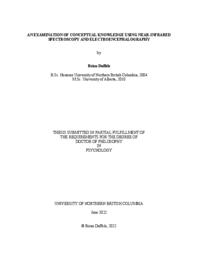
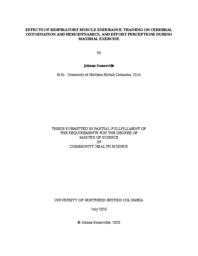
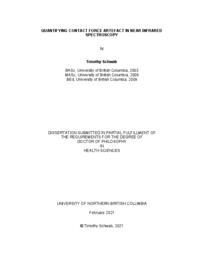
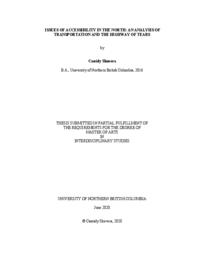
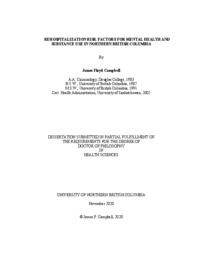
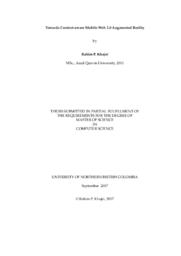
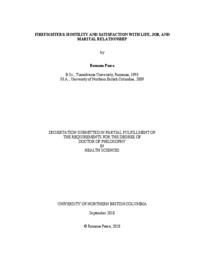
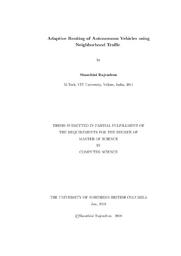
![Evaluating the RECOVER model as an effective early intervention program Evaluating the RECOVER model as an effective early intervention progam [sic]](/_flysystem/repo-service/styles/solr_grid_thumbnail/repo-service/2025-03/16437-Thumbnail%20Image.png.jpeg?itok=xkeyT9jv)
